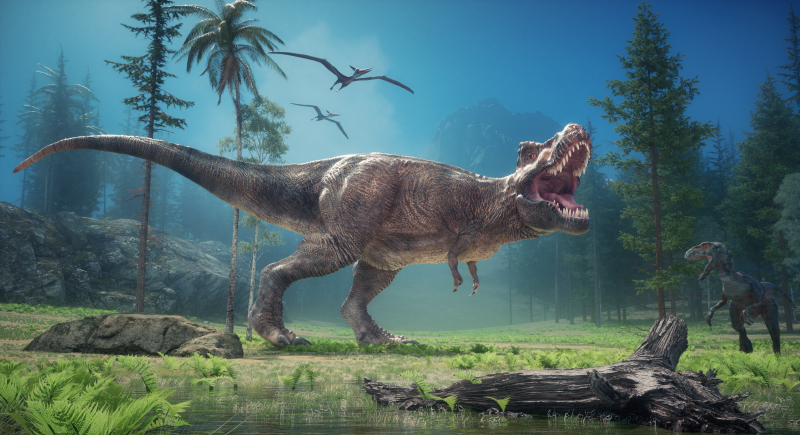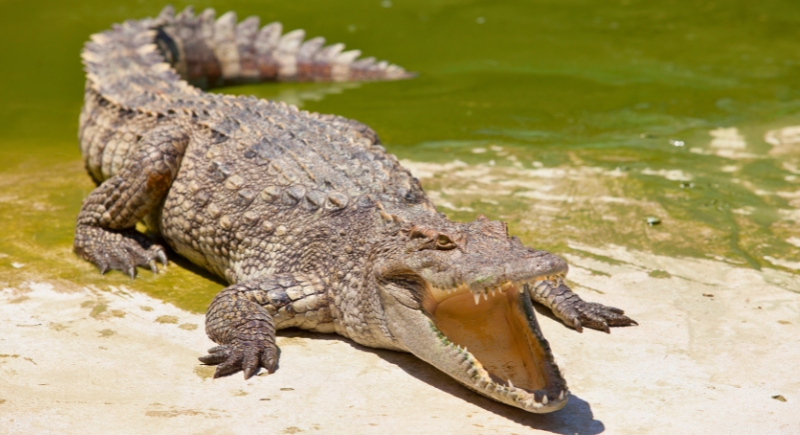Fact or Myth: Dinosaurs Could Reproduce Without a Mate
When Jurassic Park hit theaters, one of the most memorable lines came from Dr. Ian Malcolm, warning that “life finds a way.” The film explained reproduction through frog DNA that let female dinosaurs change sex, but the idea of creatures creating offspring without males seemed far-fetched. Today, scientists know it’s not only possible but part of nature.
A female American crocodile living in a Costa Rican reptile park for 18 years without a mate laid a clutch of eggs. Most failed to develop, but one contained a fully formed fetus. The fetus did not survive, yet DNA testing showed it was almost identical to the mother, which confirmed reproduction without any male contribution. This rare event is called facultative parthenogenesis, where species that normally reproduce sexually can sometimes reproduce asexually.
The Science Behind Virgin Births

Image via iStockphoto/Orla
Facultative parthenogenesis has been documented in many animals. Certain insects, such as bees and ants, use it regularly. It has also been seen in vertebrates, including sharks, snakes, and birds. The resulting young are not perfect clones but “half clones” that inherit only maternal DNA. Until recently, it was unclear whether crocodilians were capable of it. The Costa Rican case answered that question with the first confirmed crocodilian virgin birth.
Crocodiles are part of the archosaur lineage, a group that includes birds as modern representatives and once included dinosaurs and pterosaurs. Since both crocodiles and birds use the same reproductive mechanism, scientists believe parthenogenesis was present in their ancestors. That makes it very likely dinosaurs could also reproduce this way when mates were absent.
Lizards That Skip Males Altogether
Some reptiles don’t just occasionally reproduce without males, but they do it exclusively. The New Mexico whiptail is unusual among reptiles because it has no males at all. Every individual is female, and each lays eggs that develop without fertilization. The hatchlings aren’t identical copies of their mothers; before the eggs form, the lizards double their chromosomes, which introduces variation even though the species relies entirely on parthenogenesis.
Whiptails also engage in mating-like behavior, with females mounting each other in ways that seem to trigger ovulation and boost egg production. The species itself originated in the wild as a hybrid between two other whiptail types, and it carries the informal nickname “Leaping Lesbian Lizard.” Similar cases of parthenogenesis have been recorded in other reptiles, including Komodo dragons, showing that the phenomenon is more common than once thought.
Could Dinosaurs Do the Same?

Image via Getty Images/nattanan726
If modern reptiles and birds can reproduce without mates, dinosaurs almost certainly had the same ability. For them, parthenogenesis could have been a survival strategy when populations were scattered or males were scarce. It would have given females the opportunity to sustain their species under harsh conditions.
The crocodile fetus in Costa Rica did not make it, but that doesn’t rule out successful births. Birds, snakes, and lizards have all produced viable offspring this way, so it is reasonable to think dinosaurs could have done the same. This makes Malcolm’s line in “Jurassic Park” more than clever dialogue. Science shows that life really does find a way.